- Home
- Orhan Pamuk
Other Colors Page 35
Other Colors Read online
Page 35
The more the empire grew, the more it needed to find its center. The Selimiye expresses the Ottomans’ centralizing impulse in its very design, as did all of Sinan’s work and indeed all great Ottoman religious architecture: The dream was to construct a mosque that—whether viewed from the inside or the outside—was a single mass, dominated by a single dome. The great Ottoman mosques of earlier periods, like Sinan’s own earlier works, had a multitude of little domes and half domes, and the beauty was in the harmonious interplay between the great dome rising somewhat indistinctly from the center and the half domes, weight towers, and buttresses crowded around it. With the Selimiye Mosque, which Sinan called his crowning achievement, the overriding ambition was to replace this busy confusion with one enormous dome. When I was in my twenties, studying architecture, my classmates and I saw a link between the desire for a central dome and the mercilessly centralizing political and economic machinery of empire. But in a book written in his name by his friend the poet Sai, Sinan claimed to have taken his inspiration from Istanbul’s Hagia Sophia.
Planted around the Selimiye’s great dome are four minarets, the highest in the Islamic world; they too reflect the twinned intellectual concerns that shaped the mosque’s design: the quest for a center, and the desire for symmetry. Inside two of these minarets are three separate and never-intersecting staircases leading to three separate balconies, a feat of consonance that echoes the building’s timeless geometry. But after one is dazzled by the symmetrical extravagance of the exterior, the plain, pure symmetries of the interior come as a shock. This shock reveals the secret key to all Ottoman architectural thinking: that monumental exteriors proclaiming the wealth and power of the Ottoman Empire and the abiding greatness of its sultans should be allied with pure inner spaces that draw the faithful into direct communion with God. As with all great Ottoman mosques, Selimiye’s interior derives its power not from paintings, ornaments, and embellishments but from its clean, spare lines. To enter it is to forget the power, determination, wealth, and technical mastery of the Ottoman Empire and its sultans and to succumb instead to the mysterious light seeping in through its multitude of tiny windows; it is to look at the interplay of light and dark and read in it man’s insignificance. But this is not an architectural idiom that overwhelms the visitor with its soul-crushing perpendiculars; it is a circular architecture that affirms the oneness of humanity—the umma—and evokes the simplicity of life and death. As we stand inside Sinan’s masterwork, it is his visible and invisible symmetries that call out to us; it is the mosque’s sublime geometry that evokes God’s perfection in the plain and powerful purity of the dome, the bare stone, and the eight slender pillars.
CHAPTER SIXTY-NINE
Bellini and the East
There are three artists we know as Bellini. The first, Jacopo Bellini, is remembered today not so much as a painter but as the man who brought the two more famous Bellinis into the world. His elder son, Gentile Bellini, was, during his lifetime (1429—1507), the most famous artist in Venice. Today he is remembered chiefly for his “voyage east” and the artworks it inspired, most particularly his portrait of Mehmet the Conqueror, while his brother, Giovanni, is celebrated by today’s art historians as one of the great painters of his time. It is commonly acknowledged that his sense of color had an enormous impact on the Venetian Renaissance and therefore changed the course of Western art. When E. H. Gombrich speaks of that tradition in Art and Scholarship, remarking that “without Bellini and Giorgione, there would have been no Titian,” it is Giovanni, the younger brother, to whom he refers. But it is to his elder brother, Gentile, that the exhibit “Bellini and the East” pays tribute.
After taking Istanbul in 1453, at the age of twenty-one, Mehmet II had as his first aim to centralize the Ottoman state, but he also continued his incursions into Europe, thus establishing himself in the world as a ruler of consequence. These wars, victories, and peace treaties, whose names every lycée student in Turkey must memorize and recite with nationalist fervor, led to large portions of Bosnia, Albania, and Greece coming under Ottoman rule. His power having been greatly enhanced by these conquests, Mehmet II was finally able to effect a peace treaty between the Ottomans and the Venetians in 1479, after almost twenty years of war, pillaging, and piracy in the Aegean islands and the fortified ports of the Mediterranean. When envoys began traveling between Venice and Istanbul to negotiate this treaty, Mehmet II expressed a wish for Venice to send him a “good artist,” and the Venetian senate (very pleased with this peace treaty, though it meant giving up many of their forts and a great deal of land) decided to send Gentile Bellini, who was then busy adorning the walls of the great council hall of the Doge’s Palace with his gigantic paintings.
So it is Gentile Bellini’s “voyage east” and the eighteen months he spent in Istanbul as cultural ambassador that is the subject of the small but rich exhibition at the National Gallery in London. Though it includes many other paintings and drawings by Bellini and his workshop, as well as medals and various other objects that show the Eastern and Western influences of the day, the centerpiece of the exhibition is, of course, Gentile Bellini’s oil portrait of Mehmet the Conqueror. The portrait has spawned so many copies, variations, and adaptations, and the reproductions made from these assorted images have gone on to adorn so many textbooks, book covers, newspapers, posters, banknotes, stamps, educational posters, and comic books, that there cannot be a literate Turk who has not seen it hundreds if not thousands of times. No other sultan from the Golden Age of the Ottoman Empire, not even Süleyman the Magnificent, has a portrait like this one. With its realism, its simple composition, and the perfectly shaded arch giving him such a victorious aura, it has come to be regarded as not only the portrait of Mehmet II but the icon of an Ottoman sultan, just as the famous poster of Che Guevara is the icon of a revolutionary. At the same time, the carefully worked details—the marked protrusion of the upper lip, the drooping eyelids, the fine feminine eyebrows, and, most important, the thin, long, hooked nose—evoke a singular individual who is nonetheless not so different from the citizens one sees in the crowded streets of Istanbul today. The most famous distinguishing feature is that Ottoman nose, the trademark of a dynasty in a culture without a blood aristocracy. In 2003, to celebrate the 550th anniversary of the Ottoman Conquest, the Yapi Kredi Bank had the painting brought from London to Istanbul and exhibited it in Beyoğlu, one of the busiest districts of the city; schoolchildren came in by the busload, and hundreds of thousands queued up to stare at the portrait with a fascination only a legend can inspire.
The Islamic prohibition against painting, the particular fears about portraits, and ignorance about what was happening in portraiture in Renaissance Europe meant that Ottoman artists did not and could not make portraits of sultans that were this true to life. And this cautiousness toward a human subject’s distinguishing features were not confined to the world of art. Even Ottoman historians, who chronicled the military and political events of the age, were, despite the fact of there being no corresponding religious prohibition against verbal description, disinclined to think or indeed write about their sultans’ defining features, their characters, or their spiritual complexities. After the founding of the modern Republic of Turkey in 1923, when the Westernizing drive was just getting under way, the nationalist poet Yahya Kemal, who lived in Paris for many years and was as well acquainted with French art and literature as he was oppressed by doubts about his own literary and cultural heritage, once remarked ruefully, “If only we had painting and prose, we’d be another nation!” In so saying, he may have been hoping to reclaim the beauties of a lost age as documented in painting and literature. Even when this was not, strictly speaking, the case—as when he stood before Bellini’s “realistic” portrait of Mehmet the Conqueror—what troubled him was that the hand that drew the portrait lacked a nationalist motive. One can sense a profound displeasure in these words, a Muslim writer’s dissatisfaction with his own culture. He is also succumbing to the common
fantasy of effortless adaptation to the artistic products of an utterly different culture and civilization, that this could somehow be accomplished without changing one’s soul.
There are many examples of this childish fantasy in “Bellini and the East” and its accompanying catalog. One is the watercolor from a Topkapi Palace album that is attributed to an Ottoman artist named Sinan Beg and is almost certainly inspired by Bellini’s portrait, and to which the catalog gives the title “Mehmet II Smelling a Rose”; being neither a Venetian Renaissance portrait nor a classic Persian-Ottoman miniature, it leaves the viewer unsettled. In an article about Seker Ahmet Pasha, another Turkish artist who drew from both Eastern (Ottoman-Persian miniature) and Western (European landscape painting, especially that of Courbet) traditions, John Berger spoke of this same unease, and though he felt it stemmed from the difficulties of harmonizing different techniques, like the use of perspective and the vanishing point, he also perceived that the underlying problem was the difficulty of harmonizing worldviews. In this Bellini-inspired Ottoman portrait, the one thing that makes up for the clumsiness of execution—and it seems to make the sultan uneasy as well—is the rose that Mehmet II is smelling. What realizes this rose and even its scent is not so much its color as Mehmet II’s prominent Ottoman nose. Upon learning that the Ottoman artist who painted this watercolor was in fact a Frankish artist living among Ottomans and most probably an Italian, we are reminded yet again that cultural influences work in both directions with complexities difficult to fathom.
Another painting rightly attributed to Bellini defies scholarly disputes and concerns about political correctness to suggest, with extraordinary elegance, a more humane East–West story. This marvelously simple watercolor, no larger than a miniature, shows a youth sitting cross-legged. Because the paper that the ear-ringed youth is touching with his pen is blank, we cannot be sure if he is an artist or a scribe. But from the expression on his face, from his look of concentration and the shape of his lips, even from the confidence with which his left hand shields the paper in his lap, I can see at once that he is utterly devoted to his work. His dedication to a blank sheet of paper, and his heartfelt surrender of self, elicit my respect. I feel him to be someone who holds the beauty and perfection of his work (be it drawing or text) above all else; he is an artist who has achieved the happiness that can indeed only come from giving oneself over to one’s work. My appreciation of the beauty of the beardless page’s pale face magnifies with my appreciation of the artist’s sympathy for his subject, which is so evident. It was first noted by the semiofficial historian Kritovoulos of Imbros and later by many Western-Christian chroniclers that Mehmet the Conqueror prized beautiful youths, took political risks for them, and commissioned their portraits. From this time onward, good looks were an important factor in the selection of pages in the Ottoman palace. The beauty of the young artist, and the way he gives himself over to the beauty of that which he is drawing, combined with the simplicity of the ground and the wall behind him—these give the painting an air of mystery that I sense every time I see it. Of course, the mystery has much to do with the fact that the paper into which the youth peers with such concentration is utterly blank. If this beautiful artist can think with such concentration of the thing he has yet to paint, it must mean that he can already see this image shimmering in his mind. We know from the way he has pressed his pen against the blank paper, from the way he is sitting, from his very expression, that this artist knows what he is about to do. But there is nothing in his surroundings—no object, text, sketch, mold, human figure, or view—to suggest what the subject in mind might be. We feel as if this moment frozen 525 years ago will soon cease to exist, that in the very next instant the artist scribe will begin to move the pen, and his beautiful face will light up with even greater happiness, as if he were watching someone else’s pen race across the page.
A century ago, in 1905, this painting was still in Istanbul; today it belongs to the Isabella Stewart Gardner Museum in Boston. Years ago, after wandering among this museum’s Titians and John Singer Sargents, I found my young painter on a display table in a corner, on one of the top floors. To see him, I had to lift the thick cloth over the glass protecting the painting from light damage and bow my head. As I gazed down at the painting, the distance between me and it seemed to be the same as the distance between the painter and his blank sheet of paper. I was looking at Bellini’s small painting in just the same way that a sultan might, in a private moment, look at a miniature illuminating the thick and heavy book in his hand. I too was gazing downward like the painter in the painting. What distinguishes Islamic painting from Western painting after the Renaissance no less than the religious prohibitions, and perhaps even more than those, is the secretive downward gaze that Bellini captures so knowingly in this portrait. Painting in Islamic culture was a restricted art, permissible only to decorate the insides of books and so confined to small spaces; never were these paintings meant to hang on walls, and they never did! As the cross-legged youth sits lost in thought, gazing down at the blank sheet that will become his painting, he assumes the same posture that the rich and powerful person—most likely a sultan or a prince—will be obliged to assume to look at this painting for his eyes only. Let us compare this pose—this downward gaze of the cross-legged artist bending over a blank sheet of paper—with the stance a Western artist might take to view his own painting—Velázquez, for example, viewing Las Meninas, likewise a painting within a painting, wherein an artist is caught in the act of creation. We see in both the things that define paintings as objects: the edges of the paper or canvas, the painter’s pen or brush, and the pensive concentration on the artist’s face. But Bellini’s Eastern artist’s gaze is not toward his world or his surroundings: It is fixed on the blank paper on his lap and we can tell from his expression that he is thinking of the world inside his head. It is the artistry of the Ottoman-Persian miniaturist to know and to recall all the great art that has preceded him and to remake it in a burst of poetic inspiration. But in his portrait of himself at work Velázquez is lifting his head to see the vanishing point, to the world reflected in the mirror on the wall behind him, to the world itself and the complexity of that which he is painting. We cannot see the painting within his painting either (though we guess that the scene before us is the one he is painting), but we can see from Velázquez’s tired and self-interrogating look that his head is full of weighty questions arising from the painting’s unbounded composition, whereas Bellini’s young painter looks at his blank sheet with the happiness of a youth recalling—with almost metaphysical inspiration—a poem he has learned by heart.
In my corner of the world, the seated youth attributed to Bellini is well-known, even if it is not as famous as his portrait of Mehmet the Conqueror. The cross-legged figure is commonly thought to be Cem Sultan, who was treated so cruelly by his older brother and whose sorry fate is described in numerous exotic and melodramatic novels. In the textbooks of my childhood—penned by the passionately nationalist Westernizers of the early Republic—Cem Sultan was portrayed as being open to art and to the West, a broad-minded prince bursting with youthful vigor, while his older brother and his eventual poisoner, Bayezid II, was a fanatic who turned his back on the Western world. After the death of Mehmet the Conqueror, Bellini’s portrait of the artist was sent first to the Aq Qoyunlu Palace in Tabriz and then to the Safavid Palace, in what is today Iran. Before it was returned to the Ottoman palace, either as war booty or a gift, this extraordinary painting was much copied, this time by Persian artists. One of these copies, now in the Freer Museum in Washington, D.C., is, at least according to those romantic souls who dream of Eastern and Western masters working on the same pictures, sometimes attributed to Behzad. To look at this adaptation from close up is to notice that where Bellini so elegantly chose to place a blank sheet of paper, the Safavid painter has placed a portrait; in so doing he reminds us how little Muslim artists knew about the Western art of portraiture, most particularly the concep
t of the self-portrait, and how they were beset by anxieties about their technical inadequacies in these areas. Harvard professor David Roxburgh discovered that, eighty years after its execution, Bellini’s small portrait was placed in a Safavid album alongside other portraits, including some from the Ming dynasty. A sentence from its foreword shows that even the greatest Safavid artists found themselves lacking in this regard: “The custom of portraiture flourished so in the lands of Cathay [China] and the Franks [Europe].” But this is not to say that Persian artists were blind to the irresistible power of portraits. Consider the story of Hüsrev and şirin, the classic Islamic tale that inspired more miniatures than any other, wherein the beautiful şirin first falls in love with the handsome Hüsrev just by seeing his portrait. The irony of this topos is that the Persian artists charged with illustrating this scene were technically naïve by Venetian Renaissance standards of portraiture. In illuminated Persian manuscripts, this scene requires a painting within the painting, just as Bellini’s and Behzad’s retouched portraits do, but they almost always depict not a portrait but the idea of a portrait.
After the Renaissance, the West first knew its superiority over the East not on the battlefield but in art. A hundred years after Bellini’s “voyage east,” Vasari described how even Ottoman sultans obliged by their religion to take a dim view of painting were in awe of the skill Bellini showed in his Istanbul portraits and were inclined to praise them extravagantly. When writing of Filippo Lippi, Vasari relates how, after the painter was taken captive by Eastern pirates, his new master asked to have his portrait done; so taken was he by its shocking realism that he set Lippi free. In our own day, Western analysts, perhaps out of unease at the consequences of the West’s military superiority, prefer not to talk of the indisputable power of the art of the Renaissance; instead, they point to Bellini’s sensitive portraits to remind us with all good intentions that Easterners, too, have their humanity.

 Snow
Snow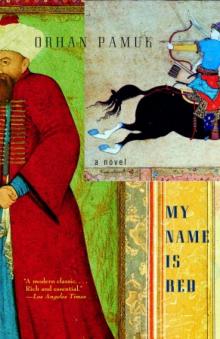 My Name is Red
My Name is Red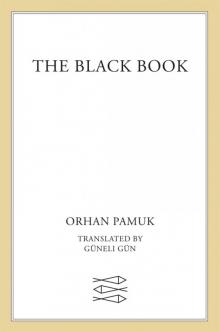 The Black Book
The Black Book The Innocence of Memories
The Innocence of Memories The White Castle
The White Castle Other Colors
Other Colors Silent House
Silent House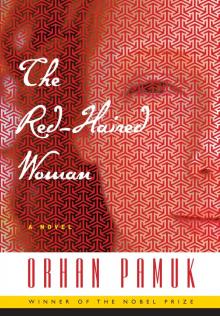 The Red-Haired Woman
The Red-Haired Woman The Museum of Innocence
The Museum of Innocence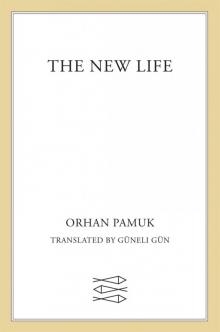 The New Life
The New Life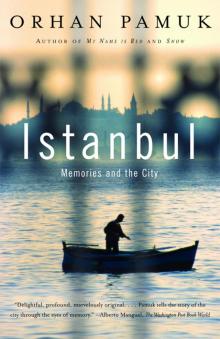 Istanbul
Istanbul